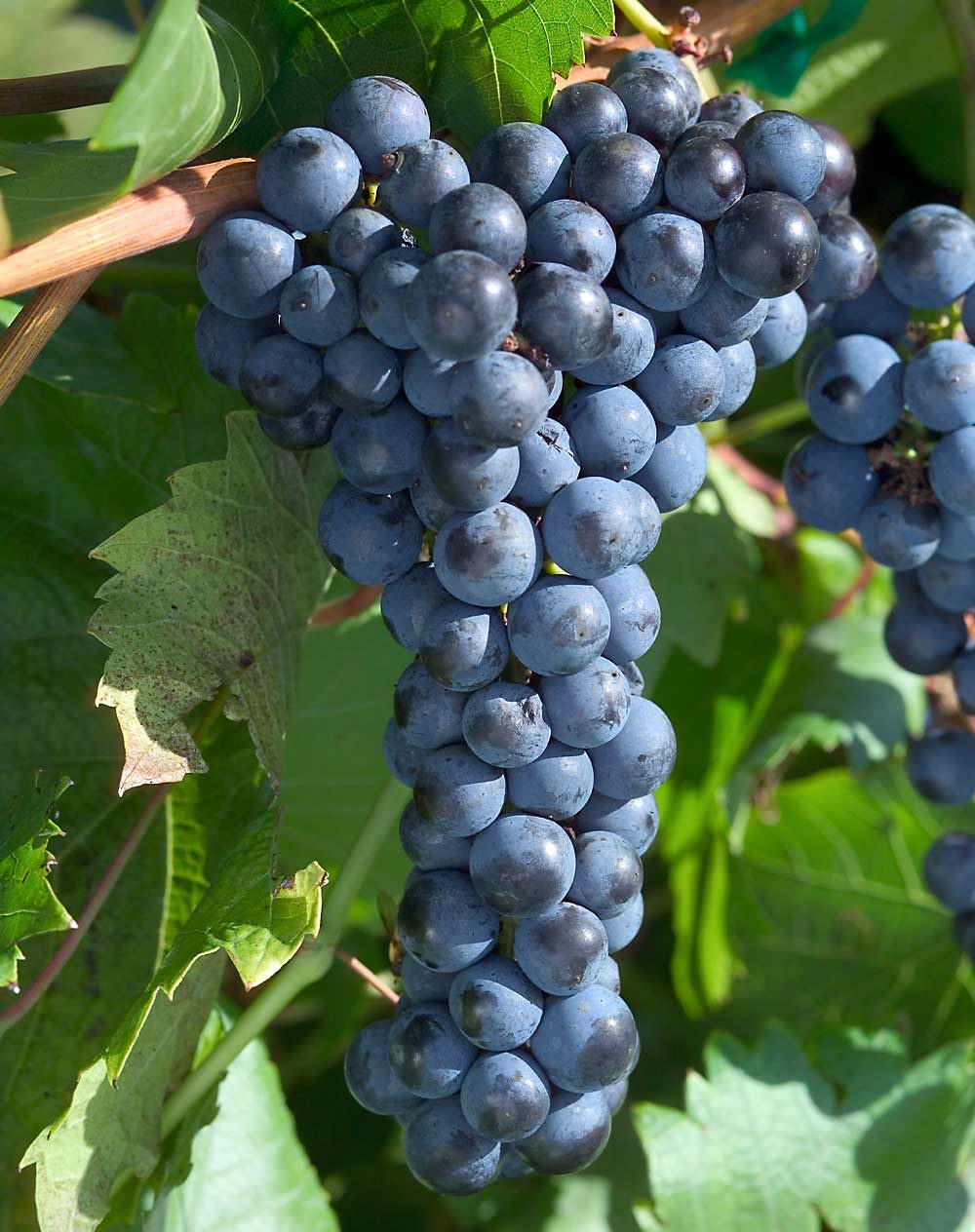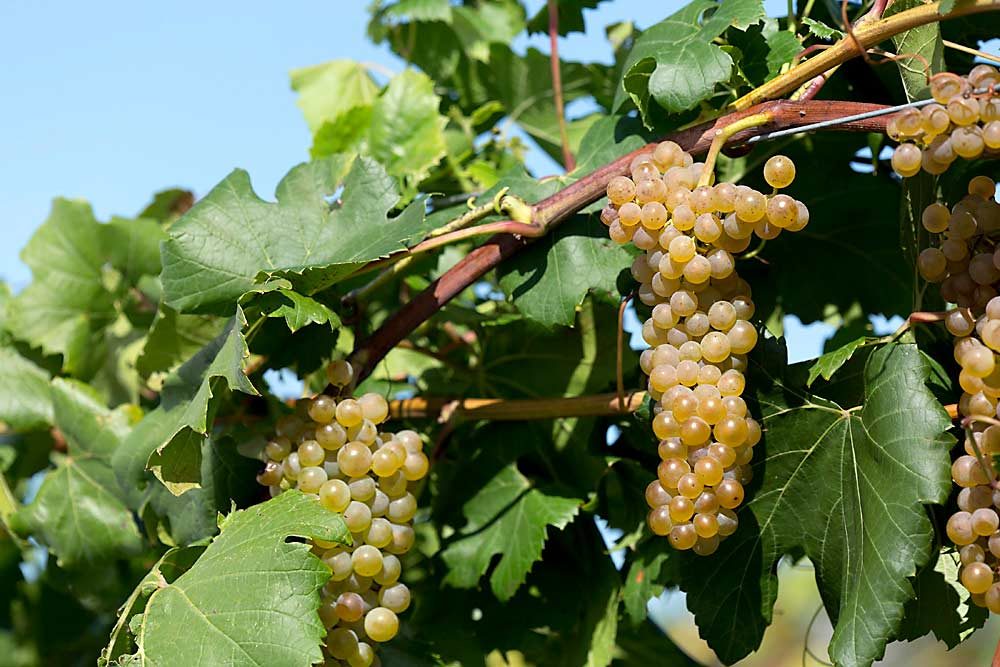
Wines made from Marquette, a cold-hardy hybrid developed by the University of Minnesota, can now be classified as “VQA Ontario,” just like wines made from traditional vinifera varieties, according to the Vintners Quality Alliance, the regulatory agency that enforces winemaking and labeling standards in Ontario.
“We are pleased to see Marquette added as a grape for wine processing and VQA,” said Debbie Zimmerman, CEO of Grape Growers of Ontario. “Our growers grow high-quality grapes, and Marquette gives some cold-hardy areas a greater opportunity to grow production.”
Ontario growers sold 768 tons of Marquette and Frontenac, another cold-hardy hybrid from the Minnesota breeding program, in 2018, which constitutes a nearly tenfold increase over the past five years, according to the Grape Growers’ annual report.
That represents just over 1 percent of the region’s grape harvest, but the VQA distinction opens more opportunities for success, such as the success growers have had with Vidal Blanc and Baco Noir, two cold-hardy hybrids that have been grown in the region since the 1950s.
Ontario’s acceptance of Marquette might be a positive sign for new hybrid varieties. Matt Clark, an assistant professor in the University of Minnesota’s department of horticultural science and leader of its Grape Breeding and Enology project, said regionally adapted hybrids are even being accepted in France’s Bordeaux wine grape growing region.

“I hope that this means hybrids are being accepted again,” Clark said. “We have entire industries in this country based on hybrid grapes, wineries that sell out their wines in their tasting rooms and wine clubs. I think people like wines because they are of the place they are produced, and local and regionally produced wines can do just that.”
The ability to survive cold temperatures is the prime characteristic of Marquette and the other varieties released by the University of Minnesota. The success of those cold-hardy hybrids laid the foundation for Minnesota’s wine industry and contributed to the growth of wine industries beyond Minnesota, Clark said.
“(The University of Minnesota) has pioneered cold-climate grape breeding and winemaking throughout the world, not just the upper Midwest region,” said Lisa Smiley, executive director of the Southern Minnesota Wine Grower Alliance. “There are University of Minnesota releases in high desert areas and mountainous areas of the United States and throughout Europe and Asia. It has only been recently that we’ve learned that we can consistently grow wine grapes in these regions.”
That revelation was due to the pioneering work of the university’s grape breeders, Smiley said.
The University of Minnesota bred grapes for decades under the purview of its general fruit breeding programs, but it didn’t dedicate a specific program to grapes until 2015, when it created the Grape Breeding and Enology project. Clark, who earned his master’s degree and doctorate in plant breeding and genetics from the university, was hired as project leader — a newly created position — that same year.
For decades after Prohibition, the university’s breeding efforts focused on multiuse grapes for things such as jams, jellies and juice. That approach started changing in the 1970s, when a nascent Minnesota wine industry began. Peter Hemstad, the university’s longtime grape breeder, spent the next few decades developing wine grapes.
In 1996, the university released Frontenac, its first wine-specific grape variety. There were maybe three wineries in the state at that time. Other wine grapes followed, including La Crescent, Marquette and Itasca.
Buoyed by the knowledge that cold-hardy wine grapes could grow in Minnesota’s frigid environment, without winter protection, the state’s wine industry burgeoned from there. By 2019, Minnesota was home to more than 70 farm wineries, Clark said.
The main trait of University of Minnesota grapes is cold hardiness, but the project also breeds for disease resistance (especially to powdery and downy mildew) and to reduce acidity.
The university collects royalties on its patented varieties; the majority of the project’s operational costs are paid by the Minnesota Agricultural Experiment Station and by competitive grants, Clark said.
About a dozen people work directly on the project, but many others at the university work with grapes in some capacity. The project has laboratory facilities on the Saint Paul campus, but its primary location is in the university’s Horticultural Research Center in Excelsior, just west of Minneapolis.
There are more than 10,000 experimental grapevines on 12 acres at the Excelsior facility, producing thousands of seedlings each year. The project’s genetic base includes Vitis vinifera cultivars and French hybrids, but the genetic backbone is V. riparia, Minnesota’s native grape, Clark said.

Minnesota winters provide the ultimate test for the experimental vines. If they can’t survive minus 35 degrees Fahrenheit, they’re not going to make the cut. Itasca, the project’s most recent release, was neck and neck with four other white grapes, but the polar vortex of 2014 proved that it was the hardiest.
“Itasca stood head and shoulders above the others in terms of bud survival,” Clark said. “That was the signal that we should release that variety.”
Itasca’s white-grape rivals still have potential, though, but in warmer climes than Minnesota.
“We’re exploring with other states to see if they’ll perform there,” Clark said. “That’s a bit of a pivot for us. We’re not just focusing on Minnesota anymore.”
The project has experimental grape plots with growers, nurseries and universities in other states testing its grapes in different environments, he said.
The Grape Breeding and Enology project has made another pivot, too. It’s now putting more effort into developing seedless table grapes that can survive in Minnesota and other Midwestern states.
The Midwest will never displace California in terms of table grape production, of course, but if the region’s growers have access to quality cold-hardy table grapes, it could create new market opportunities. Clark hopes the project will start releasing new table grape varieties in the next five to seven years.
“We’re pretty excited about some of them,” he said. •
—by Matt Milkovich






Leave A Comment